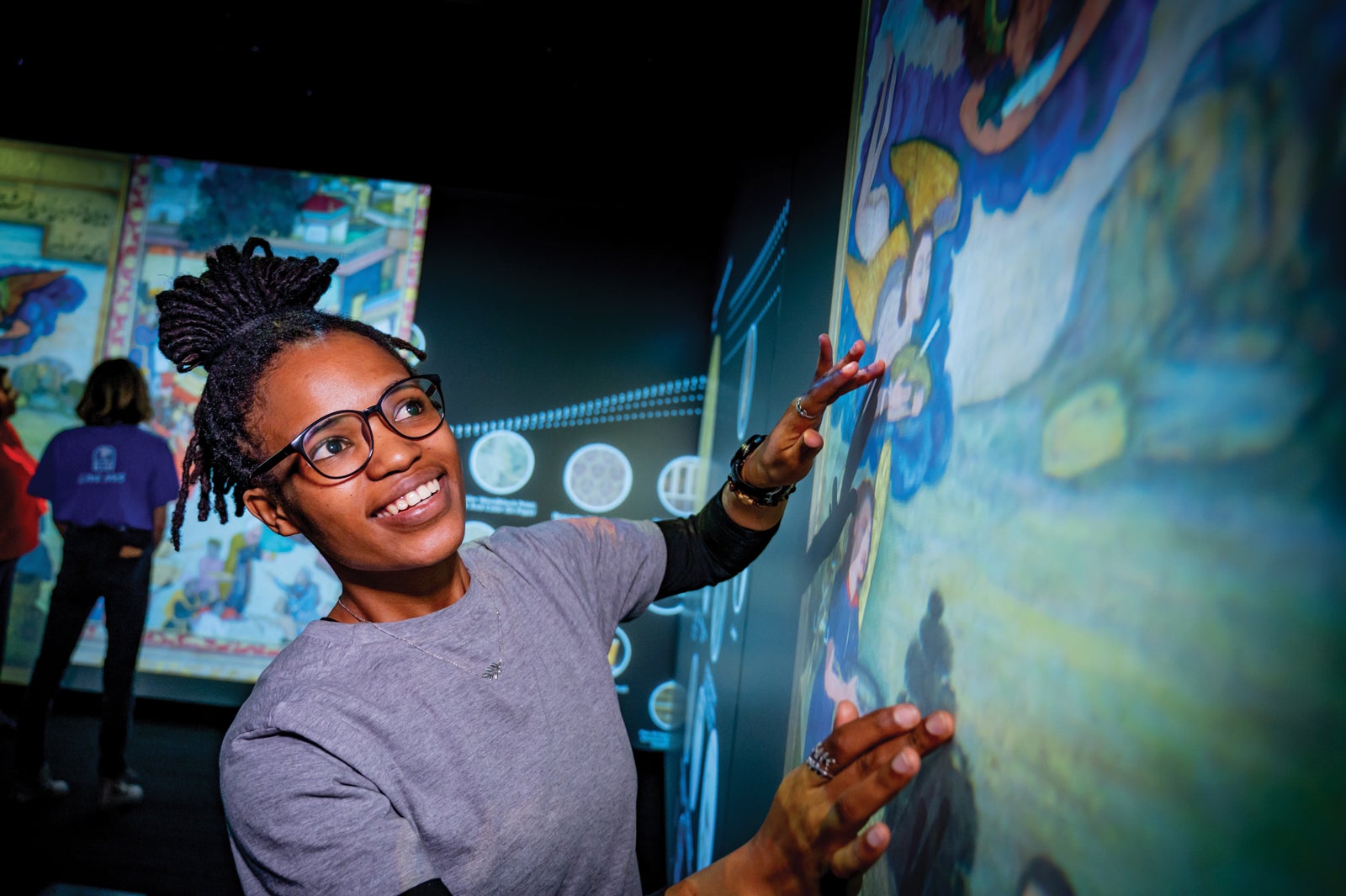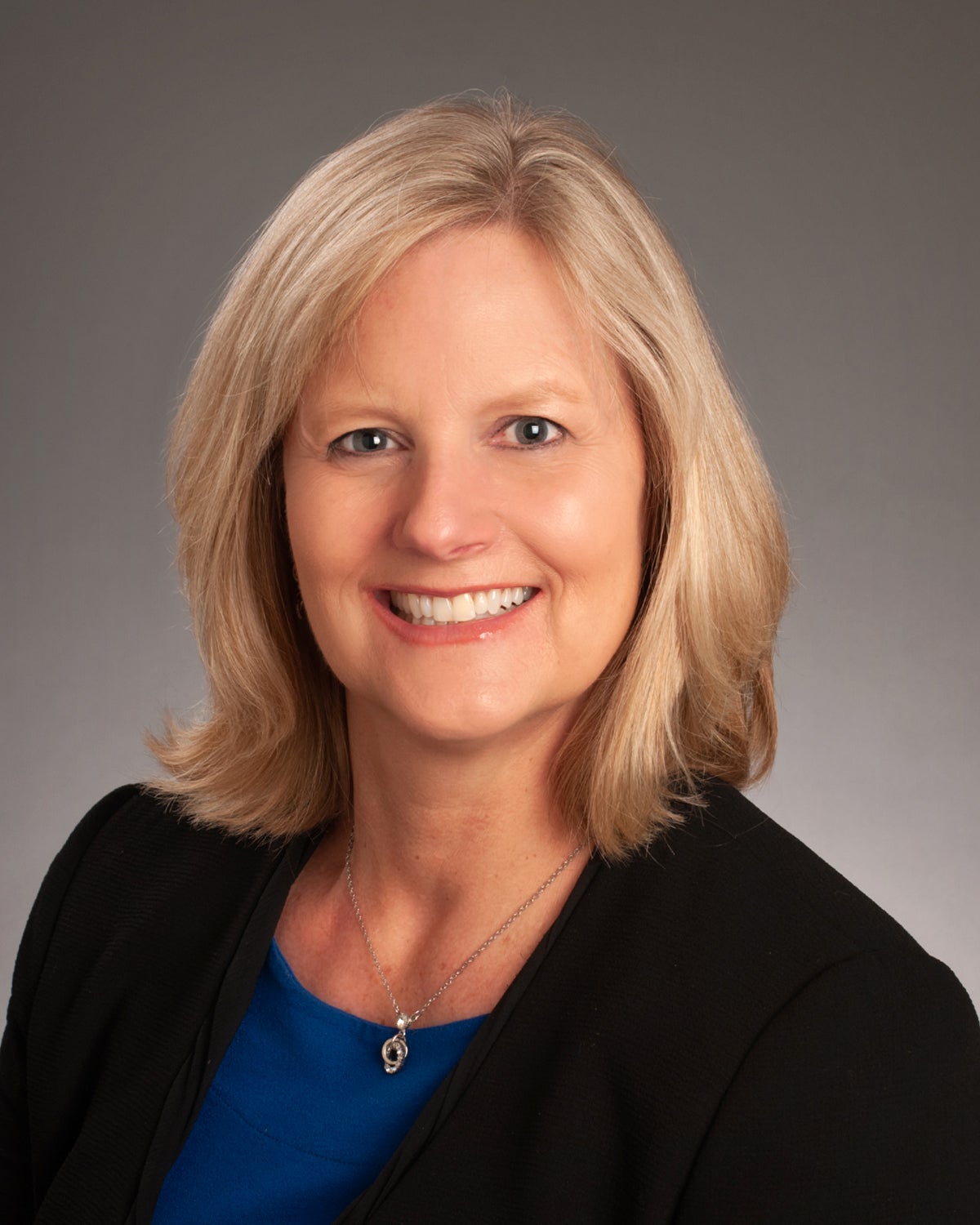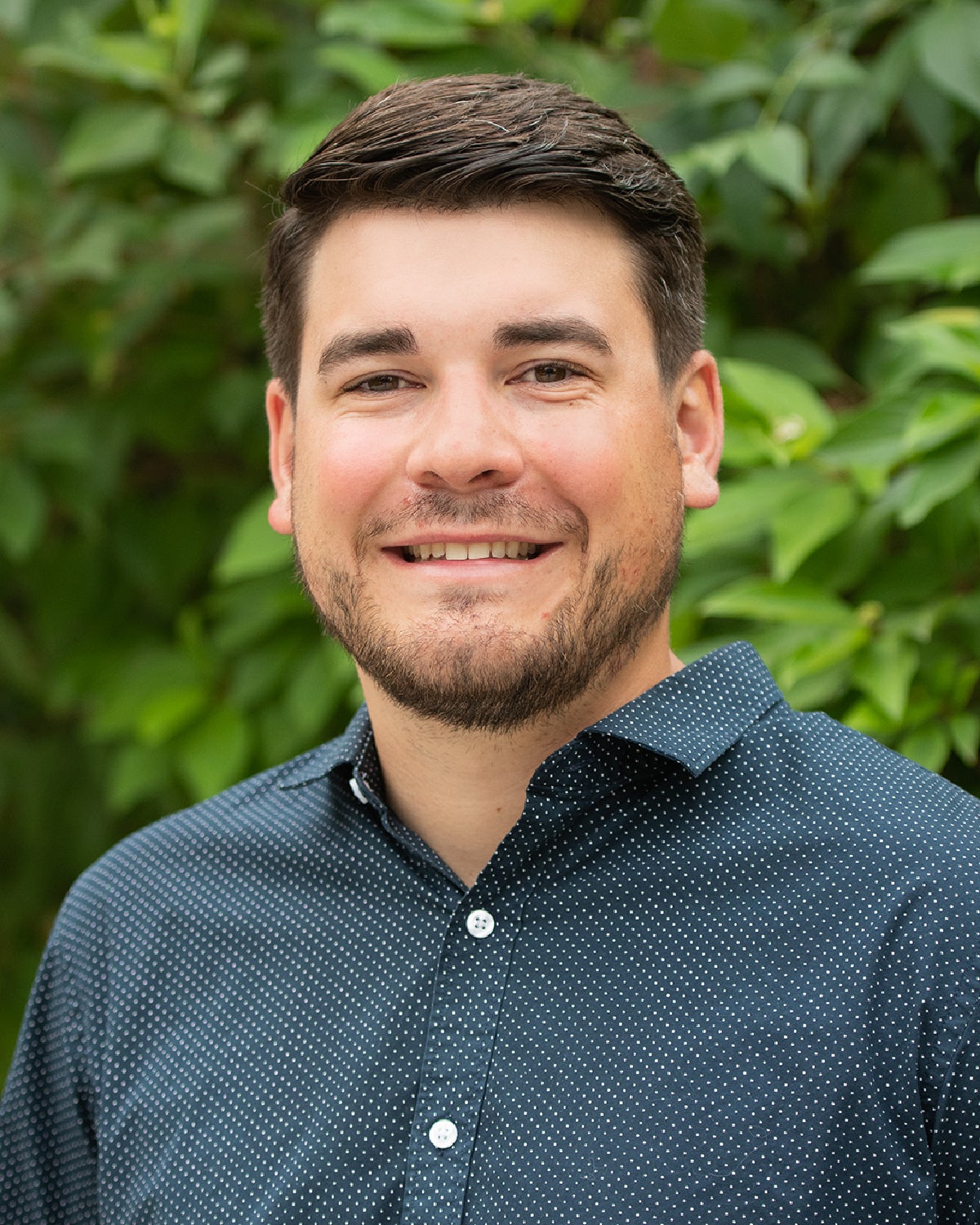
The Keith and Catherine Stein Luminary in the Boise State Center for Visual Arts is among the most advanced facilities at the university: a room where three of the four walls are touchscreens backed up by high-powered Silverdraft computers. Its technology harkens to scientific applications, but at Boise State, instructors and students can use it for almost anything.
The Luminary is where Broncos and the Boise community can touch the arts, feel the issues and connections, and solve problems. The Luminary showcases a close glimpse of the artistic world, encouraging conversation and real-world problem-solving. Its power is to make a difference in the world. It can be a digital gallery, with high-resolution scans of art from the world’s largest and most important galleries. It’s also a studio where instructors can showcase original visualization projects, and Idaho lawmakers can make geographic presentations during Idaho legislative sessions.
Terra Feast, manager of the Onramp program and K-12 professional development at Boise State, will use it to weave coding and student-created digital artwork into middle and high school curricula in rural areas. A field trip to the Luminary will show students their work on a grand scale and expose them to art images pulled from a massive digitized collection, allowing them to chart their own path through — and find their place in — millennia of creative enterprise.
“There might not be a means for them to travel or see great work from the Metropolitan Museum of Art, or even envision themselves traveling. Until you’ve been inspired by visual art that’s from a different place, it’s hard to see yourself traveling to that different place. It’s about imagination,” Feast said. “That melding of goals brought us in the Onramp program to the Luminary.”
Terra Feast
The team behind the Luminary views it as an interdisciplinary space that makes connections across campus and throughout the community. Boise State Associate Professor of Physics Brian Jackson used it to screen images of interstellar space from the James Webb telescope, and the facility has confirmed engagements from digital media scholar and MacArthur Fellow Lisa Parks; members of the Powell 150: Sesquicentennial Colorado River Exploring Expedition; and composer, video artist and desert botanist Sean Dahlman. Amanda Ashley, a professor of Urban Studies and Community Development, director of the School of the Arts and interim director of the PhD program in Public Policy and Administration in the School of Public Service, described the Luminary as a new way for the university to show its innovative chops and impact.
“Visual storytelling is at the core of what Boise State is developing through different programs across campus,” she said. “The Luminary is an incredible asset for students, faculty, and the community to be able to develop those skills in the classroom, in research and creative activity, and in community collaborations.”
Amanda Ashley
Inside and out, the Luminary is sophisticated. A multitude of scholars, students and community partners have already discovered its vast array of applications. Students have coded programs for use by other students, and researchers have a new way to share their findings exhibition-style with other researchers or directly to the public. These transdisciplinary innovations are what makes the need for giving so strong. Computer parts, replacements for the 50 million lights that make up the screens, are all high-wear elements that require regular upkeep and replacement. The Stein Luminary Interim Director Lisa Hunt said the volume of use, the ways it’s already benefiting the university’s international profile and its untapped potential are strong reasons for philanthropic support.
“As other institutions also get Luminaries, we’ll be able to share our pioneering content across state lines and global borders,” she said. “Having that many people using the space, it really does take a lot of effort on the part of the technology itself. We need to update it, keep it running at a high-end speed, and allow for that touchscreen to work for new programs. Covering an 87-foot wall is not easy for computers, so we need to be able to keep up.”
Lisa Hunt
The Stein Luminary is a cornerstone facility in fulfilling the mission of Boise State. Please consider a gift in support of it today.
Support the Keith and Catherine Stein Luminary.
Inspired by this story? Let's chat!
-

Melanie Bannister
Senior Director of Development
-
